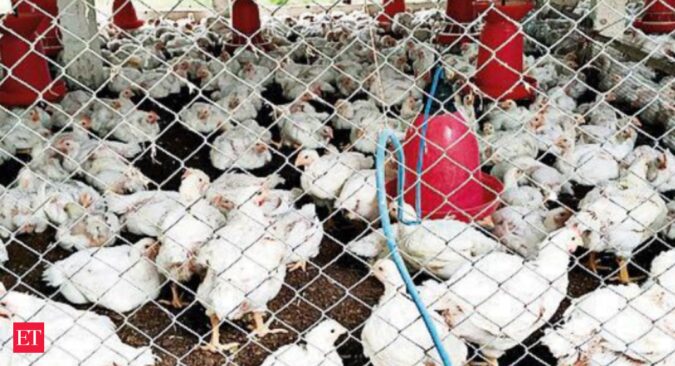“The growth will be on a high base set by the ~25% topline surge last fiscal.
Along with revenue, operating profitability is also likely to bounce back 70 basis points (bps) this fiscal as input feed [1] costs decline on softer soy and maize prices. This will help strengthen credit profiles despite additional debt set to be contracted for capacity increase over the medium term,” said Crisil.
The company said it analysed 45 poultries rated by CRISIL Ratings, generating close to Rs 15,000 crore revenue last fiscal.
Himank Sharma, Director, CRISIL Ratings, said “Consumption of broiler meat and eggs is seen rising to ~5.2 lakh tonne (up 11-13% on-year) and 150 billion (up 6-8%), respectively. This is led by improvement in rural demand, higher per-capita consumption of meat, and increasing preference for protein-rich diet. Increased volumes will support sectoral revenue growth despite dampening realisations.”
According bto the ratings agency, broiler meat realisation is likely to drop 6-8% on-year to Rs 114-116 per kg this fiscal largely on account of increased supplies with new capacities coming onstream. “However, poultry feed costs, driven largely by maize and soy, may moderate from their highs seen last year, which should prop up operating margins to over 5.5% — 70 bps higher, on- year.Increased revenue and profitability will allow companies to internally fund incremental working capital requirement. While poultries have undertaken 8-10% capacity addition (partly debt-funded), with demand remaining firm, the capacity added in the last two quarters of previous fiscal will also see a quick ramp-up this fiscal,” it said.Jayashree Nandakumar, Director, CRISIL Ratings said, “Hence, deleveraging is expected to continue in the poultry sector, supported by improving volumes and healthy profitability. The addition in debt will not have a bearing on financial risk profiles. Credit profiles are expected to strengthen, with total outside liabilities to tangible net worth ratio improving to around 1 time from almost 1.4 times before the pandemic, while debt protection metrics will also improve this fiscal.”
“We expect aggregate interest coverage ratios to improve to over 6.5 times in current fiscal as against an average of 5.11 times seen over last five fiscals.
That said, sharp movements in feed prices, bird flu incidences, heat waves, and the extent of rural and semi-urban demand will bear watching,” said the note.
